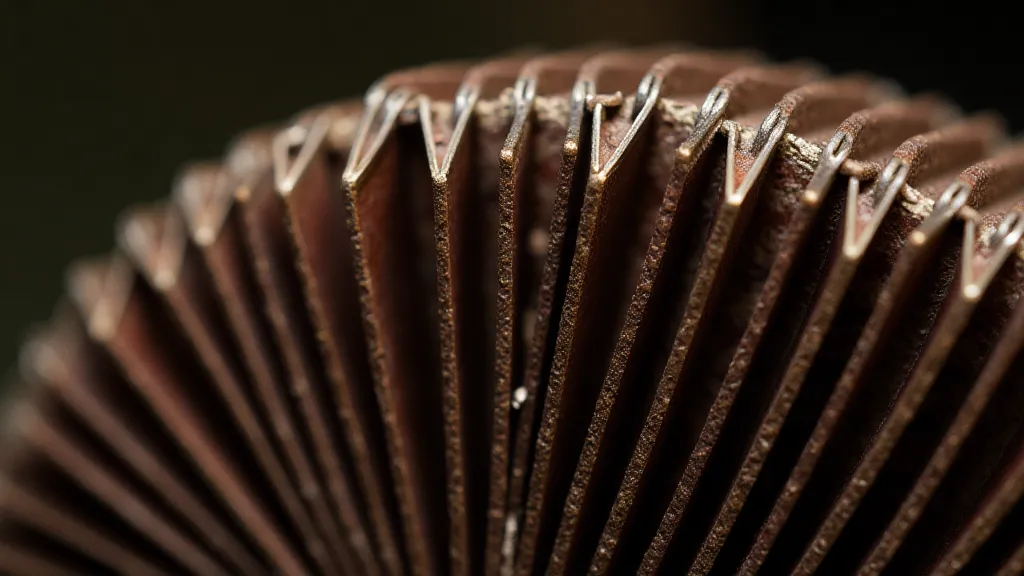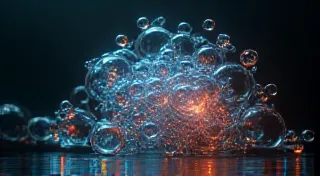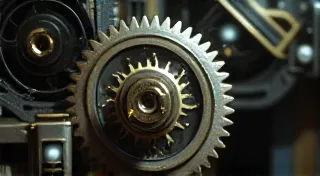The Unseen Hand: Magnetic Fields and Biological Systems
There’s a peculiar feeling you get when holding an old accordion. It’s not just the weight, or the feel of the bellows flexing in your hands. It’s something deeper – a sense of history, of skilled craftsmanship echoing across generations. Many of these instruments, born in the late 19th and early 20th centuries, relied on surprisingly precise mechanical tolerances and, unbeknownst to most at the time, benefited from an understanding – though not a theoretical one – of magnetic interactions. The very construction of such devices speaks to an intuitive grasp of physical principles that transcends mere practical skill.
While we now routinely use rare earth magnets in everything from electric vehicle motors to hard drives, the principles governing magnetism have resonated with living systems long before human comprehension truly blossomed. Today, we're beginning to appreciate the subtle but powerful influence of magnetic fields on biological systems – a realm that reveals a fascinating, interconnectedness between the physical and living worlds. The implications of this discovery are profound, potentially reshaping our understanding of life itself and opening up entirely new avenues for scientific inquiry. Consider, for instance, the clever mechanisms devised by early inventors – a primitive understanding of magnetism might have influenced their techniques for achieving precise timing in early machines; it’s akin to the ingenuity we see in the creation of a simple clockwork heart, a testament to how early innovators harnessed subtle forces.

The Compass Within: Navigation and Magnetoreception
Perhaps the most well-known example of biological interaction with magnetic fields is magnetoreception – the ability of certain organisms to detect and respond to magnetic fields. Migratory birds, for instance, don't rely solely on visual cues or the position of the stars to guide their journeys. They possess a “magnetic compass,” a biological system that allows them to sense the Earth’s magnetic field and use it for navigation. Research suggests this ability originates from specialized proteins, like cryptochromes, in the eyes that are sensitive to magnetic fields. It’s a phenomenon so compelling, so intrinsically tied to the rhythms of the planet, that it almost feels destined – like a pre-programmed response hardwired into the very fabric of life.
Salmon, sea turtles, and even honeybees employ similar mechanisms. The consistency of this phenomenon across diverse species hints at a deep evolutionary significance – a primal connection to the planet’s magnetic signature. Imagine the sheer wonder of a salmon, instinctively sensing the subtle pull of the Earth's field, navigating thousands of miles back to its birthplace. It’s a testament to the intricate design of life and our ongoing discovery of its hidden capabilities. The ability of these creatures to find their way across vast distances, guided by an invisible force, underscores the power of magnetic fields in shaping the natural world. It sparks a question: could understanding this phenomenon help us develop more advanced navigation systems, perhaps even mimicking the elegant simplicity of a biological compass?
Beyond Navigation: Magnetic Fields and Cellular Behavior
The influence of magnetic fields isn’t limited to large-scale navigation. Recent studies are uncovering their role in fundamental cellular processes. Magnetite, a naturally occurring magnetic mineral, has been found within certain cells in various organisms, from bacteria to human brains. While the exact function remains a subject of ongoing research, theories suggest it plays a role in everything from calcium signaling (essential for muscle contraction and nerve impulse transmission) to radical pair reactions involved in photosynthesis. The discovery that living cells incorporate magnetic materials raises fascinating questions about the interplay between inorganic and organic matter.
The fascinating element here is how weak magnetic fields, significantly weaker than those used in MRI machines, can subtly affect these processes. Calcium ions, critical for countless biological reactions, are sensitive to magnetic fields. The slight alteration in ion movement caused by a magnetic field can, in turn, trigger cascading effects throughout the cell. Think of it as a gentle nudge that, over time, can steer complex reactions in a specific direction. This delicate influence is just beginning to be understood, and it underscores the inherent sensitivity of biological systems to even the most subtle environmental cues. It’s easy to imagine how a deeper understanding of these principles could inform new approaches to treating disease – perhaps by harnessing the power of magnetic fields to restore cellular balance.
The Accordion's Legacy: An Echo of Craftsmanship & Magnetism’s Resonance
Returning to the accordions that sparked this contemplation, consider the intricacies of their construction. The reed blocks, the precise spacing of the keys, the careful alignment of the bellows – all required a level of accuracy that, while not directly involving rare earth magnets, implicitly relied on a practical understanding of physical principles, including magnetism. Even the act of planning the layout of a map—understanding contours and magnetic anomalies—reflects a connection to these principles, a parallel to the biological compass systems we see in nature; one could delve deeper into understanding these phenomena through a study of the cartographer's compass.
Early accordion makers, using simple tools and a keen eye, had to compensate for magnetic forces during the manufacturing process. Even subtle magnetic distortions in the metal could throw off the delicate balance of the reed vibrations, rendering the instrument unplayable. This is not to suggest they understood the underlying physics of magnetism, but rather, they intuitively adapted their methods to mitigate its effects. The enduring quality of these instruments is a silent testament to the marriage of craftsmanship and a subconscious awareness of physical laws. It's a legacy of practical wisdom passed down through generations – a silent understanding of the forces that shape the world around us.

The Future of Magnetic Biology: A Field of Emerging Possibilities
The field of magnetic biology is still in its nascent stages. While we've uncovered some remarkable insights, many questions remain unanswered. Can we harness the power of magnetic fields to enhance cellular repair or treat diseases? Could we develop new diagnostic tools based on magnetic biomarkers? The potential for artistic expression is also noteworthy—the concept of orchestrating magnetic fields to create visually stunning, levitating sculptures embodies an exciting intersection of science and art; think of the elegance and complexity in levitating echoes.
The potential applications are vast, but it’s crucial to approach this field with caution and ethical considerations. The subtle nature of magnetic interactions means that even small changes can have significant consequences. A deeper understanding of these interactions is essential for responsible innovation. Furthermore, exploring this new frontier requires creativity and unconventional thinking—nurturing the ability to think outside the box, to connect seemingly disparate ideas, a process akin to cultivating imaginative potential; it's a path similar to the one described in the magnetic seed.
Preserving the Past, Exploring the Future
As we delve deeper into the mysteries of magnetic biology, it’s important to remember the lessons of the past. The antique accordion, a symbol of human ingenuity and craftsmanship, reminds us of the inherent connection between physical principles and living systems. It’s a physical embodiment of how our ancestors, through observation and experience, developed an intuitive understanding of the forces that shape our world. The care and attention lavished on these instruments—the meticulous restoration of the bellows, the precise alignment of the reeds—mirrors our responsibility to approach this new field of scientific inquiry with both rigor and reverence.
Just as restorers meticulously preserve these instruments, safeguarding their legacy for future generations, we have a responsibility to explore the potential of magnetic biology with care and foresight. By combining the wisdom of the past with the innovative spirit of the present, we can unlock new frontiers in science and technology, all while honoring the subtle, unseen hand of magnetism that guides life on Earth. The journey ahead promises to be both challenging and rewarding—a testament to our enduring curiosity and our relentless pursuit of knowledge.






